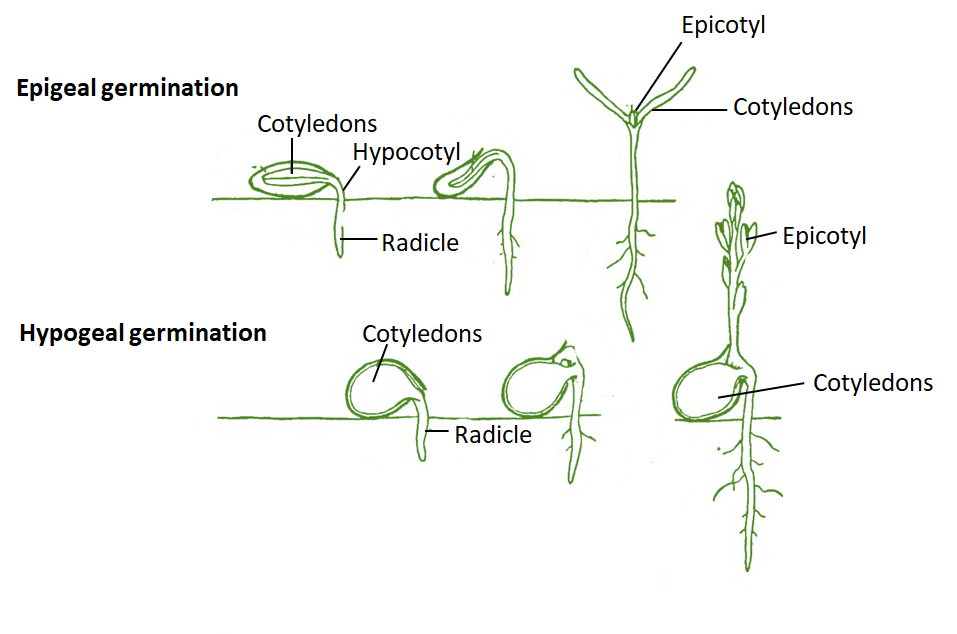Question
Question: Write any two differences between Hypogeal germination and epigeal germination....
Write any two differences between Hypogeal germination and epigeal germination.
Solution
The term is applied to the sprouting of a seedling from a seed of an angiosperm or gymnosperm, the growth of sporting from a spore, for example, the spores of fungi, ferns, bacteria, and also the growth of the pollen tube from the pollen grain of a seed plant.
Complete step by step answer:
| Hypogeal germination | Epigeal Germination: |
|---|---|
| In this kind of germination, the epicotyl elongates and becomes curved. It brings the plumule above the soil. | In this type of germination, hypocotyl grows actively and becomes curved. It brings the seed above the soil. |
| Cotyledons remain underground. | After coming above the surface of the soil, the hypocotyl straightens. |
| Example: pea, gram, etc. | Example: bean, groundnut. |

Additional Information:
Similarities Between Epigeal And Hypogeal Germination:
- Both are described by the relative position of the cotyledons to the soil during germination.
- Both are the two main methods of germination.
- In both methods water is an essential component.
- In the case of both Epigeal and hypogeal germination, the epicotyl is curved to reduce damage to the plumule.
Plumule of Hypogeal and epigeal germination:
- The plumule comes out of the seed coat by the elongation of the hypocotyl- Epigeal Germination.
- The plumule comes out of the seed coat by the elongation of epicotyl- Hypogeal Germination.
Note: Epigeal germination could be a kind of germination whereby the seed leaves or the cotyledons are brought on to the surface or above the soil while the shoot during germination. Hypogeal germination is a form of germination whereby the seed leaves or the cotyledons remain below the soil surface during germination.
